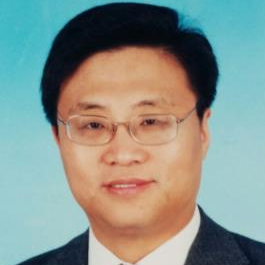Advanced Theory and Application of Magnetic Actuators
A special issue of Actuators (ISSN 2076-0825). This special issue belongs to the section "Miniaturized and Micro Actuators".
Deadline for manuscript submissions: closed (15 December 2022) | Viewed by 39568
Special Issue Editors
Interests: electromagnetics; active magnetic bearing; mechanical vibration; magnetic-levitated rotating machinery; vibration and noise control; nuclear power engineering
Special Issues, Collections and Topics in MDPI journals
Interests: magnetic bearings; vibration control; rotor dynamics; mechatronics; rotating machinery
Special Issues, Collections and Topics in MDPI journals
Interests: magnetic levitation technology; magnetic bearings; magnetic actuators applications; active vehicle suspension using magnetic actuators
Special Issues, Collections and Topics in MDPI journals
Special Issue Information
Dear Colleagues,
Magnetic actuators are actuators which use magnetic force or Lorentz force, and are widely used in industry, defense, aviation, aerospace, and daily life. Magnetic actuators integrate electromagnetism, electronic technology, superconducting and cryogenic technology, control engineering, signal processing, mechanics, and dynamics. They have attracted extensive attention from scholars at home and abroad, thus representing a research hotspot in related fields. In order to solve the basic scientific problems and key technical problems related to magnetic actuators, and gather the frontier achievements of magnetic actuators and vibration control, Actuators has set up a Special Issue, titled "Advanced Theory and Application of Magnetic Actuators", which is addressed to all types of designed actuators using the magnetic force or Lorentz force.
This Special Issue also cooperates with the 10th Chinese Symposium on Magnetic Levitation Technology and Vibration Control (https://csve.scimall.org.cn/meeting/CSMLVC10/), held on 29 July–1 August 2022, Shenyang, China. Authors of outstanding papers on topics related to the Special Issue presented at the conference are invited to submit extended versions of their work to this Special Issue.
Prof. Dr. Suyuan Yu
Prof. Dr. Jin Zhou
Prof. Dr. Feng Sun
Dr. Ming Zhang
Guest Editors
Manuscript Submission Information
Manuscripts should be submitted online at www.mdpi.com by registering and logging in to this website. Once you are registered, click here to go to the submission form. Manuscripts can be submitted until the deadline. All submissions that pass pre-check are peer-reviewed. Accepted papers will be published continuously in the journal (as soon as accepted) and will be listed together on the special issue website. Research articles, review articles as well as short communications are invited. For planned papers, a title and short abstract (about 250 words) can be sent to the Editorial Office for assessment.
Submitted manuscripts should not have been published previously, nor be under consideration for publication elsewhere (except conference proceedings papers). All manuscripts are thoroughly refereed through a single-blind peer-review process. A guide for authors and other relevant information for submission of manuscripts is available on the Instructions for Authors page. Actuators is an international peer-reviewed open access monthly journal published by MDPI.
Please visit the Instructions for Authors page before submitting a manuscript. The Article Processing Charge (APC) for publication in this open access journal is 2400 CHF (Swiss Francs). Submitted papers should be well formatted and use good English. Authors may use MDPI's English editing service prior to publication or during author revisions.
Keywords
- magnetic bearing
- maglev traffic
- magnetic drive
- magnetic vibration isolation
- magnetic vibration control
- magnetic cross field
Benefits of Publishing in a Special Issue
- Ease of navigation: Grouping papers by topic helps scholars navigate broad scope journals more efficiently.
- Greater discoverability: Special Issues support the reach and impact of scientific research. Articles in Special Issues are more discoverable and cited more frequently.
- Expansion of research network: Special Issues facilitate connections among authors, fostering scientific collaborations.
- External promotion: Articles in Special Issues are often promoted through the journal's social media, increasing their visibility.
- Reprint: MDPI Books provides the opportunity to republish successful Special Issues in book format, both online and in print.
Further information on MDPI's Special Issue policies can be found here.









